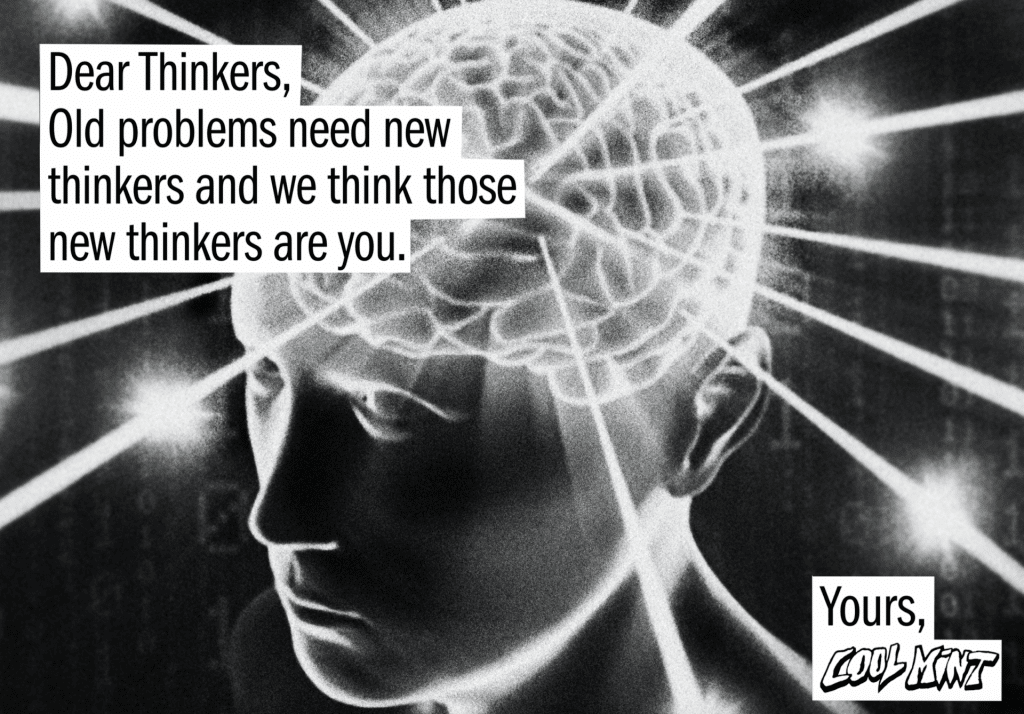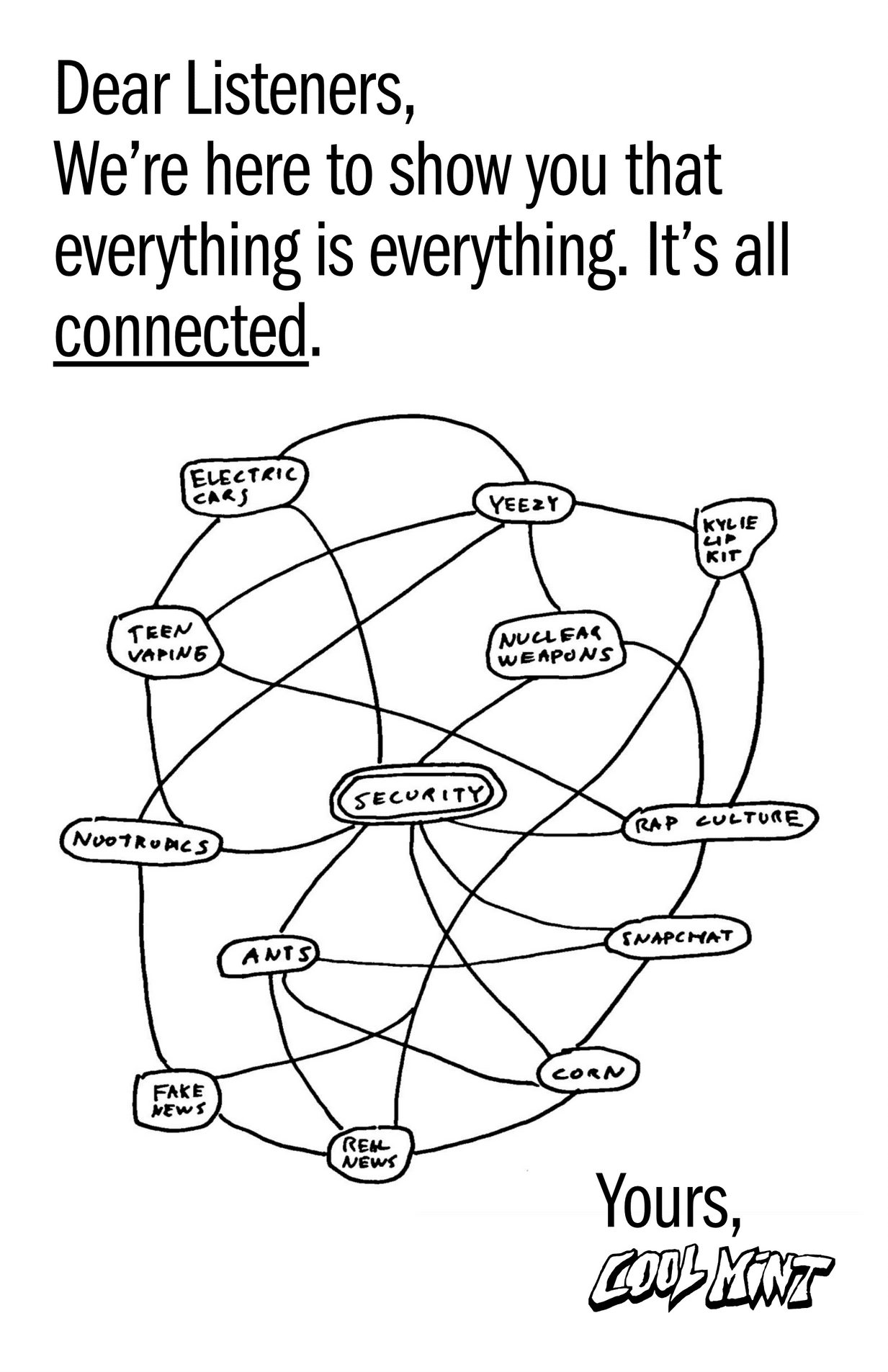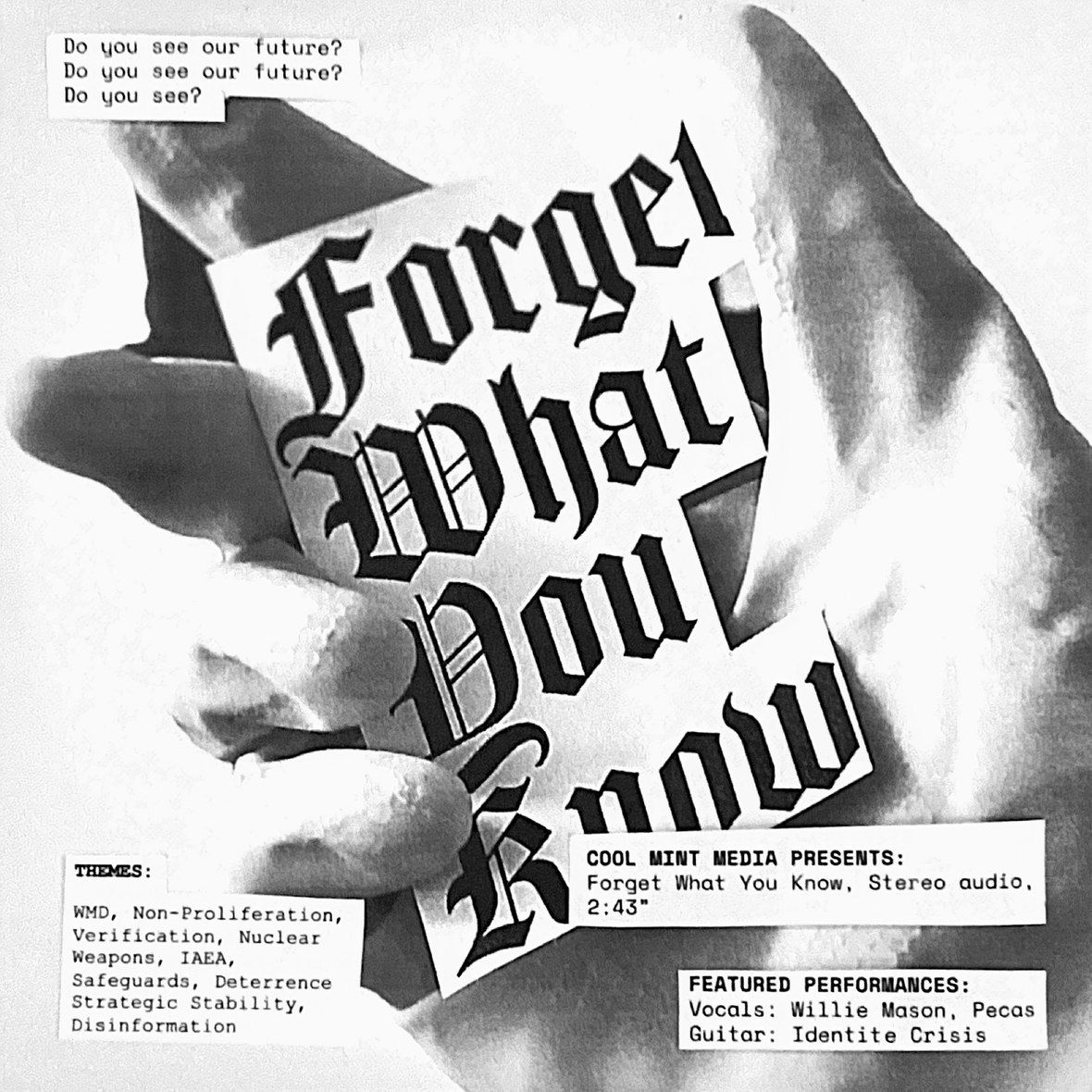Lo-fi beats to save the world to
By Jamie Withorne | September 3, 2020
 A graphic from the record label Cool Mint’s website. Image created by Cole Jorissen, reproduced with the artist’s permission.
A graphic from the record label Cool Mint’s website. Image created by Cole Jorissen, reproduced with the artist’s permission.
Imagine a symphony of synthetic beats. The introduction a dance between electronic hi-hats and a reverbed 808 pulse. The harmony slowly builds and then, just when it’s about to peak, quickly scratches to a halt. After brief pause, an effortless bass line drops in, followed by a soulful voice singing “eye for an eye / kill for a kill / aim for the heart / aim for the thrill.”
At first, it sounds like a ballad about a toxic relationship: “everything we had is gone / what the hell is going on / keep fighting fire with fire alone.” But this isn’t just another lo-fi hip-hop soundtrack. It’s a record about nuclear weapons.
As the song progresses, a male character joins in with a more traditional hip-hop lyricism. His part mirrors the anxious tone of the female voice, and after singing, “yellow sun in the sky high / changing the horizon line / see colors turn before my eyes / this is going to change everything,” he accelerates pace to a heavier rap: “Igniting the future while you’re busy / burning the present.” “I been hoping in vain too long / for you to write your wrongs.” “Between you and me / we’re going down.”
“We’re going down.”
“We’re going down.”
“We’re going down.”
The song, titled “Kill for a Kill,” is the first of its kind, produced by Cool Mint, a record label that is the first of its kind. Cool Mint is the creative workings of Cole Jorissen, who earned his degree from Rhode Island School of Design. During his studies, Jorissen partnered with the N Square collaborative to make hip-hop music about global security, nuclear weapons, and existential risks. N Square is a network of innovators committed to ending the nuclear threat through new approaches such as filmmaking, art, and, well, music. In a semi-surprising twist, Jorissen also worked directly with the US Department of State to help create Cool Mint and its first EP.

As its name would suggest, Cool Mint is incredibly cool. Its website is exciting, with random stick figures, a graphic connecting Yeezy to security, and some very direct messages. But perhaps the most exciting part is that it was clearly designed for people who don’t already operate in the nuclear policy sphere.
Recently, there has been a renewed push to get new and diverse voices into the field (see “US Department of State” above), and many of these efforts have relied on the use of popular culture and media to attempt to get people interested in reducing the nuclear threat. But 99 Luftballons and Dr. Strangelove can only go so far. It may come as a shock to those already in the nuclear policy space, but, as a borderline Gen Z/Millennial, I often think that these traditional nuclear pop culture media are old and outdated. Sure, “vintage” can be cool, but it doesn’t necessarily provide a fresh perspective; Cool Mint does.
Cool Mint is not designed for the traditionally pale, male, and stale. It’s designed expressly for young people who listen to good music and care about the world they live in (and might also just happen to wear dope sneakers or have tattoos and piercings). And it helps prove that saving the world from nuclear weapons definitely isn’t boring.
Other initiatives, such as Bombshelltoe (which is named after the classic low-top shelltoe sneaker pioneered by Adidas), founded by the incredible Lovely Umayam, also use Cool Mint’s approach—creating content not to please the executive directors of arms control organizations, but rather, specifically to attract new audiences. And because they operate on the premise that attracting new involves making new, these initiatives eschew reprocessing the same Spotify playlists and filmographies.
Cool Mint provides the chance for fresh voices and offbeat ideas, for creators, to control the message about existential threats, security, and nuclear weapons. Music has the power to change and shape discussions surrounding nuclear weapons. Cool Mint is a testament to that.

In its debut EP, the label also released a song titled “Forget What You Know.” It samples monumental nuclear speeches, including fragments on how to “survive in the new nuclear age” and J. Robert Oppenheimer’s famous recitation, “now I am become death, the destroyer of worlds.” After the samples, Willie Mason raps, slow and steady, about existential crises. “There’s only one question left / remaining that’s worth answering / Do you see our future?”
“Do you see our future?”
“Do you see our future?”
“Do you see?”
Together, we make the world safer.
The Bulletin elevates expert voices above the noise. But as an independent nonprofit organization, our operations depend on the support of readers like you. Help us continue to deliver quality journalism that holds leaders accountable. Your support of our work at any level is important. In return, we promise our coverage will be understandable, influential, vigilant, solution-oriented, and fair-minded. Together we can make a difference.
Keywords: music, nuclear risk, popular culture
Topics: Nuclear Risk, Opinion














